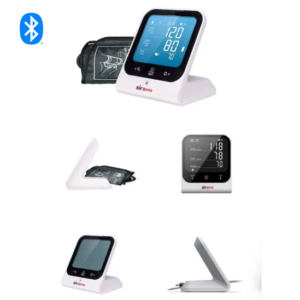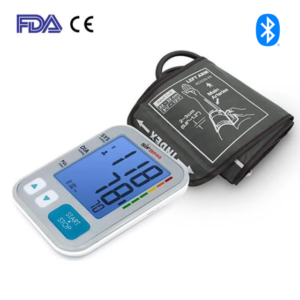Home Blood Pressure Monitoring
Hypertension is a chronic disease. In its long-term treatment process, a blood pressure monitor plays an important role. Whether and how to adjust antihypertensive drugs and how effective it is after rectification.
Human blood pressure baiIt changes throughout the day, generally 6-8 o’clock in the morning, and 16 o’clock, the highest blood pressure; 2-4 o’clock in the morning the lowest blood pressure.
The best time for hypertension patients to measure blood pressure is 6-8 o’clock and 16 o’clock, as long as these two periods are not high, basically once a day can be very good. Special situation: Some people are particularly high at 4-6 in the morning, called the “dawn phenomenon”.
Therefore, it is best to measure once every hour throughout the day to find your highest period, and then it is scientific to measure at the highest period. There must be a record after each measurement. The longer the time, the more data can explain the problem.
On June 22, the American Heart Association (AHA) and the American Medical Association (AMA) issued a joint policy statement on home self-blood pressure monitoring.
The statement pointed out that home self-blood pressure monitoring helps improve the diagnosis and management of hypertension. Moreover, compared with clinic blood pressure and ambulatory blood pressure monitoring, self-blood pressure monitoring is more feasible, especially for patients who use antihypertensive drugs.
The US statement pointed out that measuring blood pressure at home can be used to diagnose white coat (masked) hypertension and occult hypertension, as well as identify their effects, and also help to diagnose stubborn hypertension. Long-term blood pressure control effect improves patient’s compliance with antihypertensive drugs.
Studies have shown that measuring blood pressure at home can help lower blood pressure by 2.5~3.8/1.5~1.8mmHg and improve blood pressure control rate.
While adopting other interventions such as remote monitoring, online or telephone education, and personal consultation, the benefit of self-monitoring blood pressure is the greatest. The blood pressure drop can reach 4.0~6.1/1.5~2.5 mmHg, and the blood pressure control rate can be increased by 15%~56 %.
If the average blood pressure exceeds 135/85 mmHg, the diagnosis of hypertension may be considered, while the blood pressure in the clinic is 140/90 mmHg.
Since the 2017 American Hypertension Guide used 130/80 mmHg as the standard for diagnosing hypertension, the guideline also used the standard as the threshold for the diagnosis of hypertension by home self-blood pressure monitoring.
Nevertheless, choosing the appropriate blood pressure monitor is a matter of preference and other factors, For example, when the size of the cuff is not suitable for the upper arm or there is severe lymphatic edema in the upper arm and is not suitable for long-term use of the upper arm cuff, consider using a wrist-type sphygmomanometer.
In order to obtain accurate blood pressure monitoring results, urination should be performed before measuring blood pressure. After a 5-minute break, sit comfortably in a quiet room with the upper arm and back supported, and legs flat.
The cuff of the upper arm should be placed flush with the heart, and do not speak or use electronic devices such as mobile phones during blood pressure measurement. Do not give the sphygmomanometer to others before the sphygmomanometer stores the blood pressure reading.
[launchpad_feedback]


